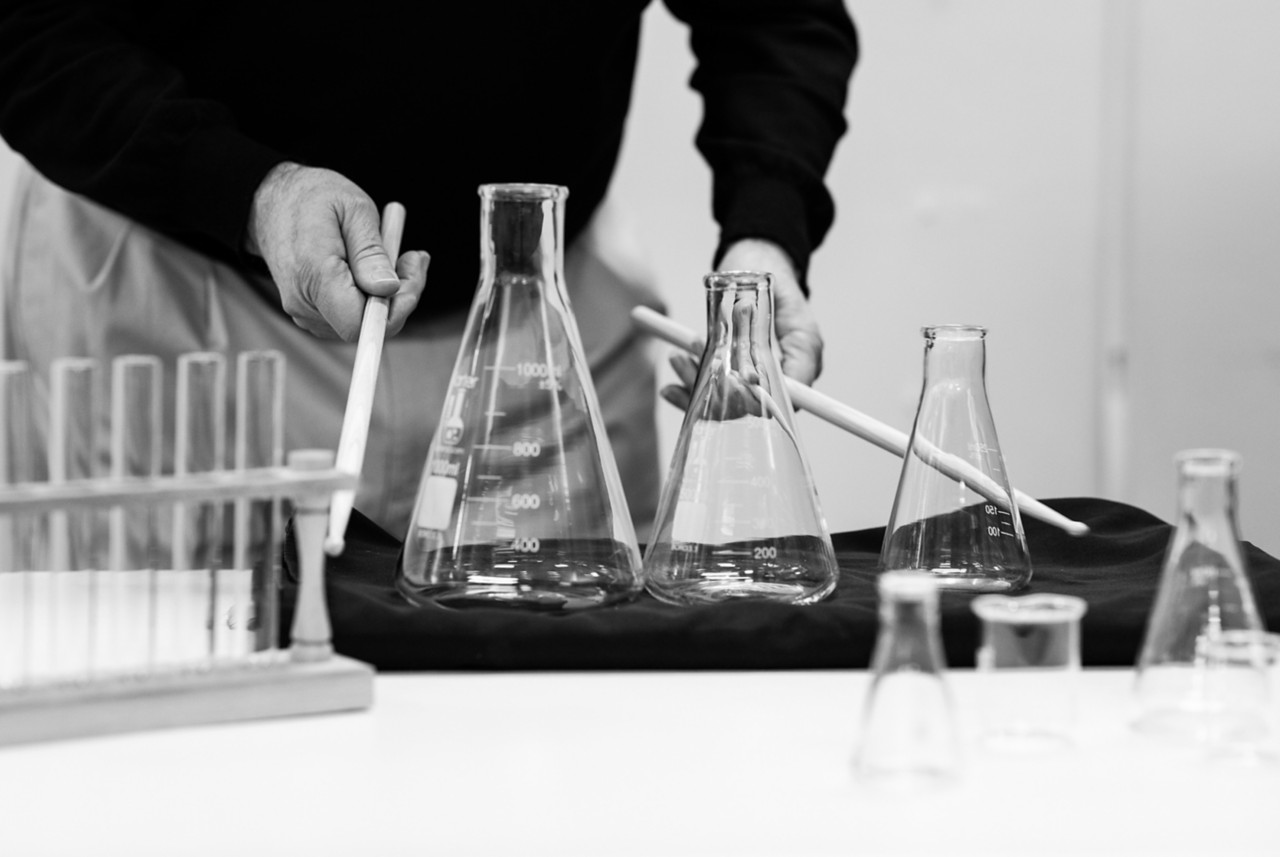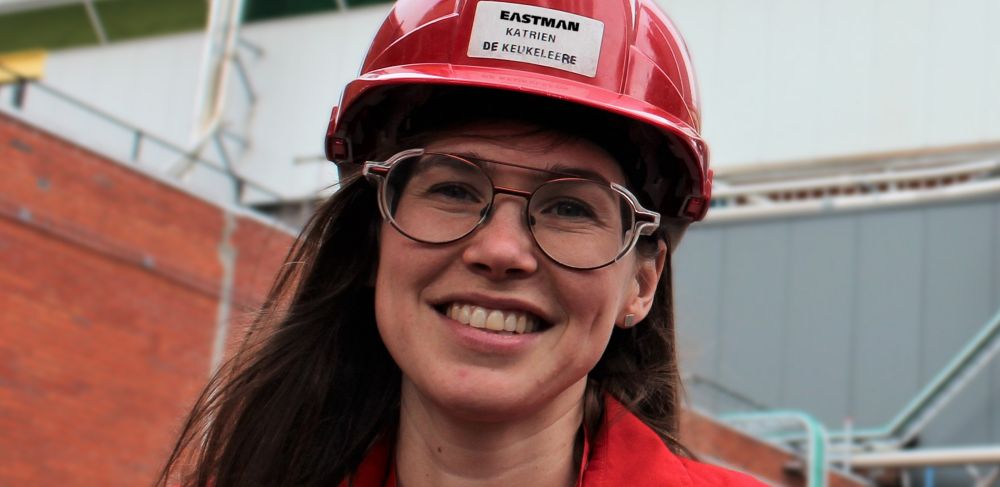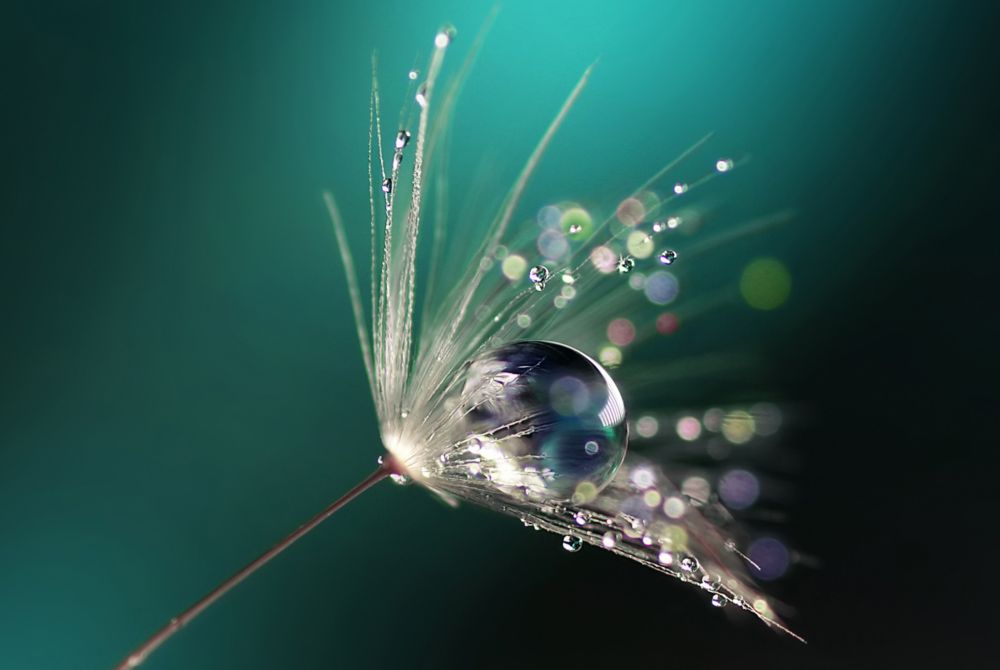As an Eastman chemist for more than 20 years, it might seem unusual for Stephen Orth to be apprehensive working with lab ware. But Orth was anxious during a recent Saturday experiment that included Erlenmeyer flasks, beakers and test tubes.
“I was pretty nervous at first, from the standpoint that this was not my forte,” Orth admitted.

Drum sticks on flasks and beakers provided compelling sounds for an orchestral experiment.
Orth quickly found his rhythm and the experiment was a success — music to the ears of any scientist. And this was, in fact, music created with the tools Orth knows so well on a musical stage in Kingsport, Tennessee, instead of in an Eastman lab. With drumsticks, Orth played percussion a range of lab glass during a Symphony of the Mountains performance titled “Isotone: A Collision of Science and Music” that celebrated Eastman and the wonders of science.
Orth’s work as a percussionist was part of a symphony performance that included the world premiere of a new musical composition celebrating Eastman and its scientific heritage. After a small orchestral ensemble played “Chemistry Suite,” Orth and his playing partner, Scott Eddlemon, took their turn and discovered through light interplay on stage that lab glass for chemical solutions can make great music too — if you throw in drumsticks, glass stirring rods and a sense of rhythm.
Eddlemon, the symphony’s executive director, is a Juilliard-trained musician who conceived the “Isotone” series of concerts more than 10 years ago when he lived in Oak Ridge, Tennessee. He wanted to celebrate scientific achievement and make orchestral music approachable. One of the earlier original works created for the Isotone series celebrated the late physicist Stephen Hawking.
“We did a piece in Oak Ridge for the High Flux Isotope Reactor,” Eddlemon said. “With that one, I said, ‘Let’s use all electric instruments like electric violin, electric guitar,’ and everybody loved it. We want people to connect with music; we want them to see it’s fun.”
Appreciating the bigger picture
For Orth, one of the most satisfying aspects of the concert was the number of young listeners in the audience. They saw these artifacts of everyday life — well, everyday life if you’re a chemist — that can be used to make music. The duet started with Orth merely thumping flasks on the table and establishing a rhythm; it picked up complexity when the drumsticks and stirring rods came out.
“There were some kids in the audience, and one of the points we wanted to make is that you don’t have to buy an expensive instrument to make music,” Orth said.
Though he didn’t play an instrument during “Chemistry Suite,” Orth did play a part. Eddlemon and the composer, Larry Spivak, approached Orth with an idea: Could the chemistry of Eastman be made into music? Orth gave Spivak an education on Eastman and how it makes specialty materials. From those conversations, Spivak translated Orth’s descriptions into three movements that represented three processes through music. The creative development was exhilarating for Orth, who for most of his life was a music lover but not a musician.
And the experience made him appreciate his Eastman career all the more. He has been with the company 21 years, relishing every year because he loves the people. Orth, who earned a Ph.D. in chemistry from the University of Virginia, is director of the analytical support division (ASD), a key component of Eastman’s reputation for quality in its products. In fact, Eastman’s ASD conducts 3 million tests a year to determine necessary changes in things like temperature and flow that are critical to product composition. Making good symphonic music requires meticulous attention — just as it requires meticulous attention to make reliable materials.
Orth’s conversations with the composer about what Eastman does every day made him think about the bigger picture too.
“Music and science are two ways of exploring the same concept — and that’s order in the world,” Orth said. “In music, you rearrange the order to make something beautiful or interesting. And in science, you rearrange the order, look at the boundaries, maybe try to push the boundaries to make something better.
“What we do with science at Eastman and how we make things that are useful and make the world a better place — there’s a beauty in that. I think that sometimes we forget to step back and appreciate that.”
Want to check out the music? You can watch the concert video on YouTube at this link. Stephen Orth’s percussion performance begins 48 minutes and 30 seconds into the concert.





